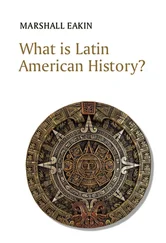Marlene Parrish - What Einstein Told His Cook 2
Здесь есть возможность читать онлайн «Marlene Parrish - What Einstein Told His Cook 2» весь текст электронной книги совершенно бесплатно (целиком полную версию без сокращений). В некоторых случаях можно слушать аудио, скачать через торрент в формате fb2 и присутствует краткое содержание. Год выпуска: 0101, Издательство: W. W. Norton & Company, Жанр: Кулинария, на английском языке. Описание произведения, (предисловие) а так же отзывы посетителей доступны на портале библиотеки ЛибКат.
- Название:What Einstein Told His Cook 2
- Автор:
- Издательство:W. W. Norton & Company
- Жанр:
- Год:0101
- ISBN:нет данных
- Рейтинг книги:4 / 5. Голосов: 1
-
Избранное:Добавить в избранное
- Отзывы:
-
Ваша оценка:
- 80
- 1
- 2
- 3
- 4
- 5
What Einstein Told His Cook 2: краткое содержание, описание и аннотация
Предлагаем к чтению аннотацию, описание, краткое содержание или предисловие (зависит от того, что написал сам автор книги «What Einstein Told His Cook 2»). Если вы не нашли необходимую информацию о книге — напишите в комментариях, мы постараемся отыскать её.
What Einstein Told His Cook 2 — читать онлайн бесплатно полную книгу (весь текст) целиком
Ниже представлен текст книги, разбитый по страницам. Система сохранения места последней прочитанной страницы, позволяет с удобством читать онлайн бесплатно книгу «What Einstein Told His Cook 2», без необходимости каждый раз заново искать на чём Вы остановились. Поставьте закладку, и сможете в любой момент перейти на страницу, на которой закончили чтение.
Интервал:
Закладка:
Note that I have written this entire section with only one pun on the word egg , even though you may have eggspected me to take an eggstraordinarily eggcessive eggscursion into the realm of eggsotic and eggstremely eggsaggerated puns until you were completely eggsasperated and eggshausted.
But I hope you can take a yolk.
Sidebar Science: Improving (?) with age
THE CHANGESthat take place in a “thousand-year-old egg” are caused primarily by the lime and the wood ashes, which are both rather strongly alkaline. (Lime is calcium oxide, CaO, and wood ashes contain potassium carbonate, K 2CO 3.) Over time, these alkaline substances infuse the tea, which seeps through the shell and acts on the proteins in the egg white, reconfiguring their molecules similarly to what cooking them would do. In the meantime, some of the normal chemical changes that take place in a, shall we say, “mature” egg yolk are also taking place, producing chemical products such as aldehydes and ketones, which are responsible for the sharpest of the flavors.
Chapter Three
Whatsoever a Man Soweth…
… that shall he also reap.
Not to wax excessively biblical, but permit me to begin this chapter with a modernized version of Genesis.
In the beginning, there was one helluva Big Bang.
Exactly nine billion years later (I think it was on a Tuesday), God created the Earth. And the Earth was without form, and void.
And God said, Let the waters under the heaven be gathered together unto one place, and let the dry land appear; and it was so. And God called the dry land Earth.
But the dry land was not what we call dry land today. It was not soil. It was molten rock (magma), which after a couple of billion years more cooled and became solid rock. And not that there was anybody around to complain, but you can’t grow crops in rock.
So when did soil appear on the surface of our planet, so that our ancestors could begin to sow, reap, and eat plants?
As the eons of seasons came and went, the rocks weathered and broke down from both physical and chemical causes. Physically, the rocks expanded in warm seasons and contracted in cold, causing cracks and fissures. Water that seeped into the cracks froze during the ensuing cold seasons and rended the rocks asunder by the powerful pressure of expansion when it froze. Moving glaciers scraped away at the surface rock, making rock dust, while the wind and running water contributed to the physical degradation of rocks into smaller and smaller fragments, from boulders to very fine grains.
Meanwhile, chemical reactions with groundwater and atmospheric carbon dioxide transformed the original rock minerals into new minerals, softer rocks, and soluble compounds that were transported by rivers and streams to other locations.
Eventually, God’s “dry land” became small particles of mixed gravel, sand, silt, and clay, distributed wherever they could lodge over the face of the Earth. They were now soil.
When plants began to grow and die in this mineral-rich bedding, their decaying organic matter enriched the soil, making it even more fertile for humans to cultivate. And so was agriculture made possible in the most recent two-millionths of our planet’s history.
The variety of foods we now raise in Earth’s soil is limited only by climate and opportunity. In the preceding chapter we sampled the products of one kind of farm: the dairy farm. In subsequent chapters we focus individually on fruits and grains, which hold special places in the pantheon of human sustenance. But for now, we’ll browse through the green fields, stopping here and there to examine a few of the hundreds of miscellaneous plant foods that we throw into the catchall category of “vegetables.”
A PALETTE FOR THE PALATE
Every time I pass the produce department of my supermarket I’m impressed by the number of vivid colors, especially greens, reds, oranges, and yellows, among the fruits and vegetables. If it’s not too complex, what are all the chemicals that make these colors, and what is their purpose?
The kaleidoscope of brightly colored fruits and vegetables—the red tomatoes, watermelons, strawberries, and beets; the orange carrots, sweet potatoes, pumpkins, apricots, and mangoes; the yellow lemons and squashes; the bluish-purple grapes, plums, and cabbages; and all the green beans and leafy vegetables—are due to a variety of phytochemicals that can be classified into three main groups, chlorophylls, carotenoids, and flavonoids, the last of which includes anthocyanins and anthoxanthins.
A phytochemical , from the Greek phyton , meaning “plant,” is any chemical compound produced by plants. But lately the term has been appropriated by health-foodists to mean any plant chemical—beyond the nutritious proteins, carbohydrates, fats, minerals, and vitamins—that may be deemed “good for you.” That includes many of the red, orange, yellow, green, and blue pigments in fruits and vegetables, which do indeed have known health benefits. But nicotine and cocaine are also phytochemicals, are they not?
Chlorophyll needs no introduction. It is a green compound, each of whose molecules contains a magnesium atom. But chlorophyll has taught us that it’s not easy staying green. When chlorophyll molecules are reconfigured ( denatured ) by heat, their magnesium atoms are released, converting the chlorophyll into pheophytin and pyropheophytin, the dishearteningly olive-drab colors of overcooked green vegetables. (See chapter 3.)
Carotenoids range in color from yellow to orange and red. Orange beta carotene is converted into vitamin A in the body. Carotenoids beautify everything from carrots to corn, peaches, citrus fruits, squash, paprika, saffron, tomatoes, watermelons, and pink grapefruit. The last three, especially tomatoes, contain the fat-soluble carotenoid lycopene, an antioxidant that has been touted as a possible preventive of prostate cancer.
Anthocyanins are water-soluble pigments found in grapes, berries, plums, eggplant, cabbage, cherries, and autumn leaves. Purple or blue in alkaline environments, they turn red in acidic media.
With not too many exceptions, you can think of the carotenoids as the yellow, orange, and bright red colors in vegetables and the anthocyanins as the blue, purple, and dark red colors.
Among the less common food colors are betalains , the intensely red, water-soluble pigments in beets. When beets are sliced before cooking, much of their color dissolves out into the water. But when unpeeled and cooked whole, they remain as defiantly red as Fidel Castro.
And what is Nature’s purpose in painting all these vegetables such pretty colors? It’s not just for still-life painters. The bright colors attract animals, who eat the plants, to their mutual benefit. The animals benefit from the healthful antioxidant properties that Nature has built into many of the colored chemical compounds, while the plants benefit by the animals’ pollinating their flowers and spreading their seeds.
THE FOODIE’S FICTIONARY:Harvard beets—part of an unlikely sports headline
Sidebar Science: Tomatoes are red, violets are blue
THE CHARACTERISTICred color of tomatoes, often attributed to lycopene, actually results from a combination of carotenoid pigments, of which lycopene is only the most abundant. The color of the fruit doesn’t always correlate with the amount of carotenoids, much less with the amount of lycopene. So one can’t draw valid conclusions about lycopene content from the redness of a tomato. Nevertheless, all tomatoes are pretty good sources of lycopene.
Читать дальшеИнтервал:
Закладка:
Похожие книги на «What Einstein Told His Cook 2»
Представляем Вашему вниманию похожие книги на «What Einstein Told His Cook 2» списком для выбора. Мы отобрали схожую по названию и смыслу литературу в надежде предоставить читателям больше вариантов отыскать новые, интересные, ещё непрочитанные произведения.
Обсуждение, отзывы о книге «What Einstein Told His Cook 2» и просто собственные мнения читателей. Оставьте ваши комментарии, напишите, что Вы думаете о произведении, его смысле или главных героях. Укажите что конкретно понравилось, а что нет, и почему Вы так считаете.












